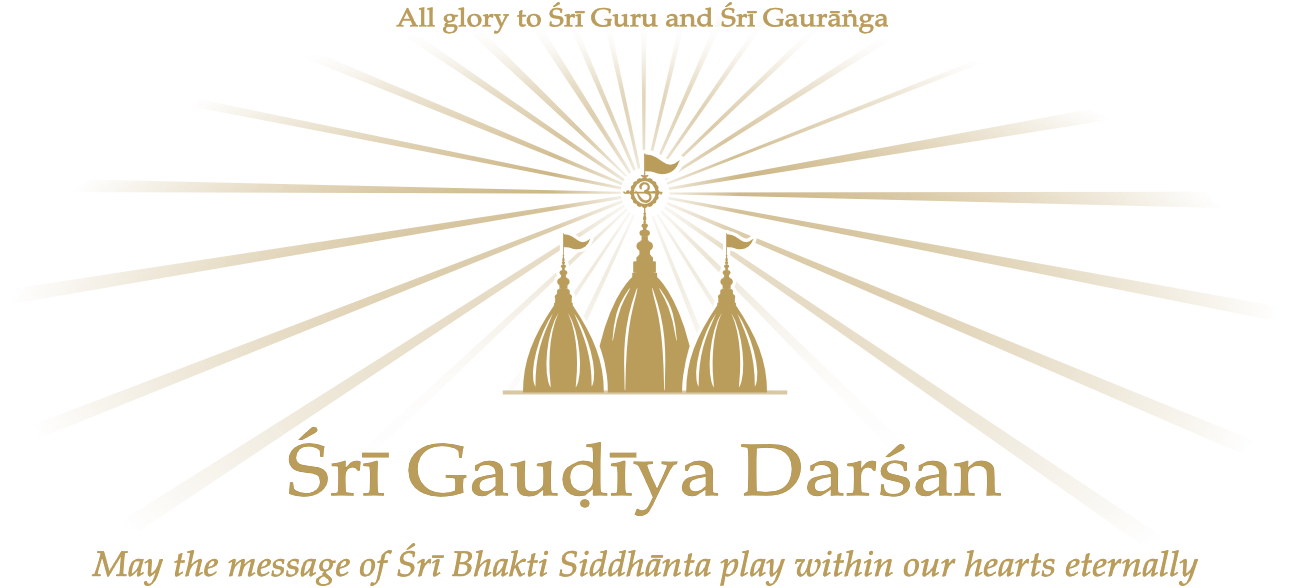Śrīla Bhakti Sundar Govinda Dev-Goswāmī Mahārāj explains Lord Śiva’s position as the best of Vaiṣṇavas.
Lord Śiva can give liberation. He has that power, and he is a perfect agent of Lord Kṛṣṇa. In the last chapter of Śrīmad Bhāgavatam (12.13.16), you will see:
nimna-gānāṁ yathā gaṅgā devānām achyuto yathā
vaiṣṇavānāṁ yathā śambhuḥ purāṇānām idam tathā
[“As the Gaṅgā is the greatest of all rivers, Lord Achyuta the greatest of all deities, and Lord Śiva the greatest of the Vaiṣṇavas, so Śrīmad Bhāgavatam is the greatest of all Purāṇas.”]
Here you can understand that Lord Kṛṣṇa has given power to other demigods, and also that Lord Śiva is the supreme Vaiṣṇava. What does Lord Śiva chant? He chants the Name of Rāma. And on whom does Lord Śiva meditate? On his master, Rāma, Viṣṇu. So, what is the mood of Lord Śiva? Why does he meditate and chant? When you can understand this, then you can understand Kṛṣṇa consciousness.
Once, Parvatī Devī asked to Lord Śiva, “Which form of the Lord is supremely worshippable?” Parvatī expected Lord Śiva to say, “Me. I am the Supreme Personality.” But Lord Śiva did not say that. Lord Śiva said:
ārādhanānāṁ sarveṣāṁ viṣṇor ārādhanaṁ param
“The supremely worshippable Personality of Godhead is Viṣṇu, Kṛṣṇa.” Then, Parvatī Devī thought, “I am not worshipping Lord Viṣṇu. I am worshipping Lord Śiva.” Lord Śiva smiled and said,
tasmāt parataraṁ devi tadīyānāṁ samarchanam
“Nārāyaṇ is the Supreme Personality of Godhead, and someone who worships Nārāyaṇ worships the highest worshippable Lord, but even more than them is someone who worships the devotees of Nārāyaṇ.” Parvatī Devī was very happy to hear this. She knows Lord Śiva meditates on Viṣṇu and serves Viṣṇu. She knows he is Vaiṣṇavānāṁ yathā Śambhuḥ, the best of all Vaiṣṇavas, so she thought, “He serves Viṣṇu, and I am serve him, so I am in a very peaceful position.”
Vedic culture was very widely and properly organised in South India, but now it is going in the wrong way. You have seen many wrong things in nature of South Indians, especially in the brāhmaṇ class. They are taking the outer form of the Vedic culture, not the inner form, and in that way they have organised the worship of Lord Śiva. Much clash came over this in the time of Rāmānuja Āchārya. When the Śaiva sampradāya and the Rāmānuja sampradāya rose, the Śaṅkar sampradāya went down, and the Śaiva and Rāmānuja sampradāyas clashed. The Śaiva sampradāya wanted to worship Lord Śiva and no one else, and their style of worship was not proper. We can still see this in South India today. They are very addicted, fanatic, you can say. The Rāmānuja sampradāya also deviated maybe a hundred years after Rāmānuja. They began to abuse the Śaiva sampradāya by preaching:
vyāghreṇa khādamāne ’pi na gachchhet śiva-mandiram
Their theory was this: if you see a tiger coming to kill you, then even if there is a Temple of Lord Śiva nearby where you can run, close the door, and save yourself from being eaten, do not go to the Śiva Temple. Better to allow the tiger to kill you and give up your body than go inside a Śiva temple!” They preached like this in an extreme way; it is not real Vedic preaching actually.
Everywhere there is some systematic adjustment. Proper adjustment comes down from Goloka Vṛndāvan. Transcendental knowledge comes down and adjusts everything. Everywhere in the Paravyoma Dhām there are abodes and forms of Lord Viṣṇu, and there also Lord Śiva has a position. Lord Śiva is also śuddha-sattva, but when Lord Śiva comes to in the mundane world as the master of Māyā, then he becomes a guṇāvatār [the controller of the material mode of ignorance]. That position of Lord Śiva is not so fair. Now everyone worships that Śiva, the guṇāvatār Śiva. We are Vaiṣṇavas, and we worship Śiva’s form as Sadāśiva in the Paravyom Dhām.
You know that in Vṛndāvan Dhām there is Rāseśvar Śiva, Gopīśvar Śiva, and many other forms of Lord Śiva. We worship these forms. We offer praṇām to Gopīśvar Śiva in this way:
vṛndāvanāvani-pate jaya soma soma-
maule sanandana-sanātana-nāradeḍya
gopīśvara vraja-vilāsa-yugāṅghri-padme
prītiṁ niyachchha nitarāṁ nirupādhikam me
(Sri Sankalpa-kalpadruma: 103)
[“O protector of Vṛndāvan Dhām! O husband of Umā, whose crown is the moon! O Śiva, you are worshipped by Sananda, Sanātan, Nārad, and all the sages! All glory to you! O guardian of the gopīs! Please give me resolute and unconditional devotion to the lotus feet of the Divine Couple who play in Vraja.”]
Lord Śiva gives entrance to the Rāsa-līlā of Lord Kṛṣṇa. He is the doorkeeper of the Rāsa Sthali. That form of Śiva, however, is not a male form. In the form of a girl, a gopī, he is the gatekeeper of the Rāsa Sthali, and when we are offer praṇām there, we use this mantra. We ask him for devotion to Kṛṣṇa and entrance to the Rāsa-līlā of Kṛṣṇa. He gives that visa, and then we go inside the Rāsa Sthali. So, Lord Śiva has two positions: one as guṇāvatār, and the other as Śuddha Śiva. We always respect everybody, not only Guṇāvatārs, Manvantārāvatārs, or Līlā-āvatārs. We respect everything, but we are in the line of exclusive devotion to Lord Kṛṣṇa. That is our position.
Reference
Spoken 23 January 1993.



Leave a Reply